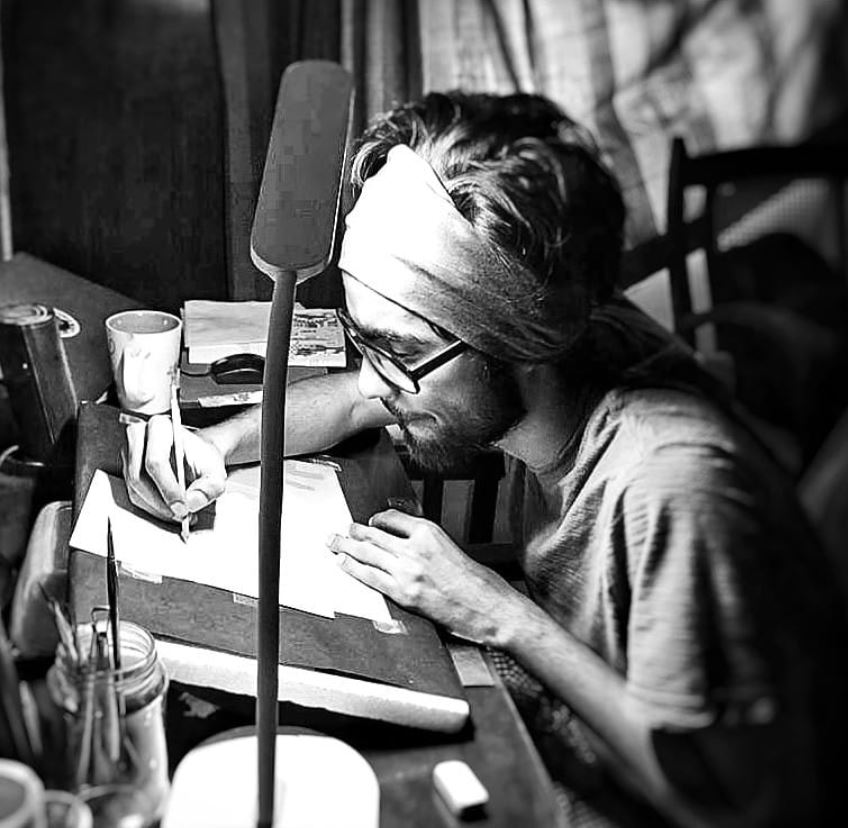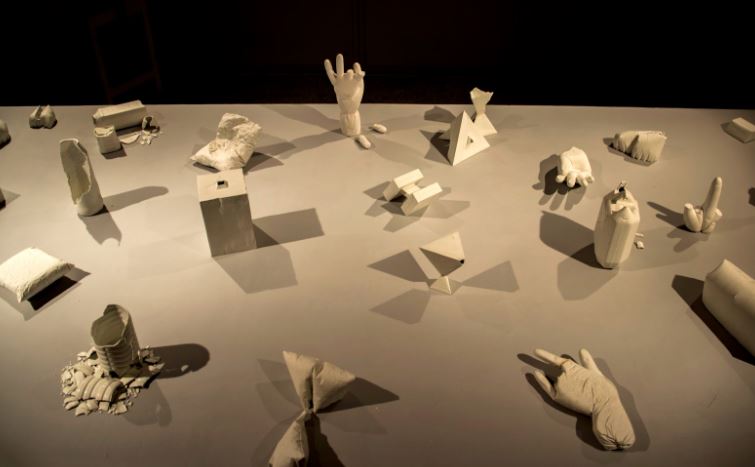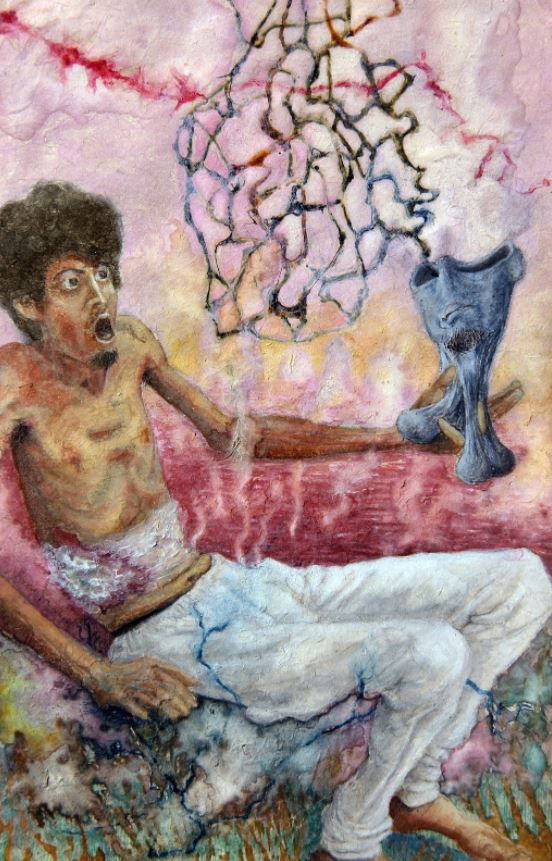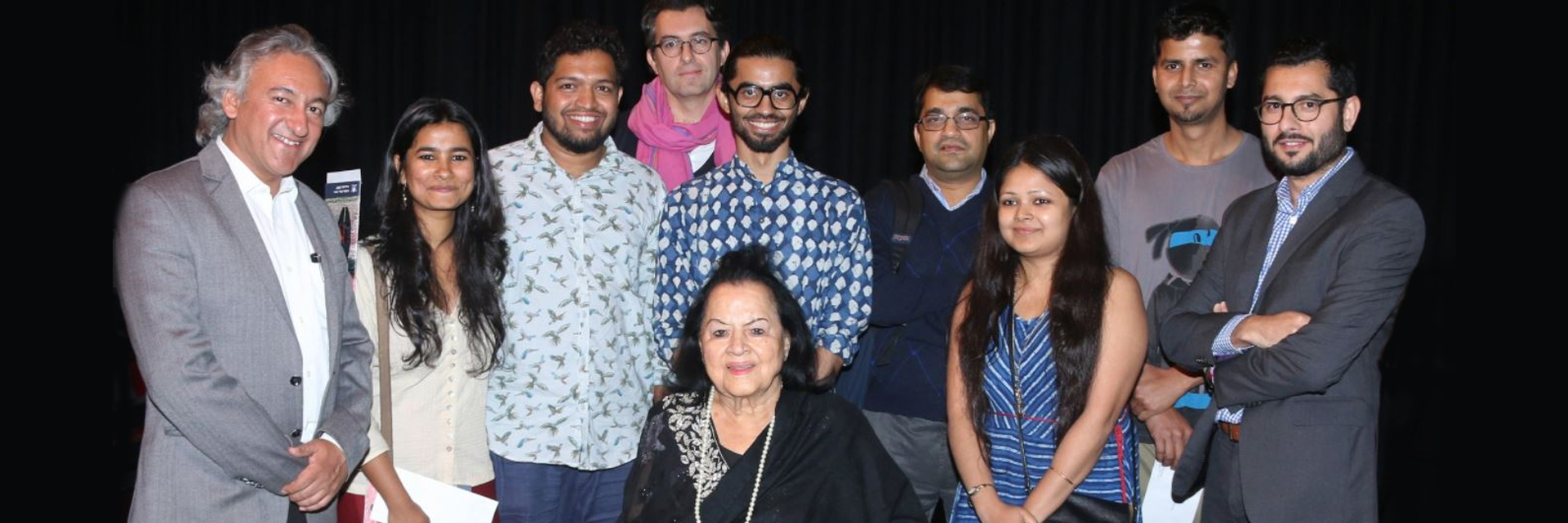(March 27, 2022) Sanket Jadia’s art is uniquely different: inquisitive and attempting to intervene into existing modes while also venturing into zones of uncertainty. This young Indian artist experiments with multiple disciplines in terms of both medium and form. A South Gujarat University alum, Sanket has developed a style that deals with history and events of conflict. Through his art, he attempts to explore how this depiction influences people’s perception of these images.

Sanket Jadia, artist
His unique art has earned him several recognitions. He made it to the Forbes India 30 under 30 in 2020, received the 2017 Inlaks Fine Arts Award in 2017 and was the Khoj Peers resident in 2014. The inquisitive artist admits in a conversation with Global Indian that while all recognitions are precious to him, he holds the Khoj Peers resident programme close to his heart as it was his first achievement. It also gave him the opportunity to display his work alongside the who’s who of Delhi’s art circuit. The Inlaks Fine Arts award, on the other hand, served as a milestone supporting his artistic endeavours monetarily.
Carving creativity out of chaos
The accomplished artist, who did his masters in visual arts from Ambedkar University, Delhi (2015) and bachelor’s in fine arts (painting) from VNSGU, Surat (2013), attempts to introduce contradictions within the usual scheme of perception, to interrogate reality. His choice of mediums like terracotta, clay, drawing, and digital design to convey his thoughts depends on the idea he is exploring.


Sanket’s approach towards art is an attempt to understand the way we situate ourselves in a particular context. He is an ardent fan of investigative images with an inclination towards forensic architecture as it looks at solving mysteries. He is intrigued with how documentation of historical events like war and violence creates a reference point. “As an artist, I keep exploring how narratives are created through images,” says Sanket, who focuses on India’s most significant post-independence events that caused a major shift in the country’s socio-cultural politics. The Babri Masjid demolition is one of them. This Indian artist has also been exploring different perspectives of the event, making sculptures around them.
Some of Sanket’s group participations were at 2020: A future under construction (2018), the Pune Biennale (2017), the Art Decade (2016), and the Indian Summer Festival (2016). The Peers Share (2014) and Degree Show (BFA – 2013) also showed his oeuvre.
Art, a way of life
“Since my childhood, I have been very interested in art and so decided to pursue it as a career,” says the Surat boy. He seems to have inherited his love for art from his late mother. “She had pursued commercial art and though I did not really see her practicing it, she was very supportive of my choice,” he says. Talking about his father, Rajnikant, who is an accountant, Sanket says, “He does not know how to measure the success of an artist, and as a logical human being, he associates it with finances. Seeing me earn steadily makes him happy and he is relieved at my choice of career.”


“I do not expect my art to fund my lifestyle,” says the passionate artist, who also works as a graphic designer and art teacher to earn a living. He loves to unwind over Netflix, documentaries and listening to music.
- Follow Sanket Jadia on Facebook




